A US News and World Report survey found that 93% of 55+ people believe aging in place is important.
Aging: it’s something we all have in common. But as we grow older, our bodies begin to weaken. We become prone to falls, disease, and mental decline.
And because of this, we must consider what we want our future to look like. More importantly, we must consider how and where we want our future to live.
By far, the most popular choice is to age in place: remain in the comfort of our homes instead of moving to assisted living.
But this choice doesn’t come without its struggles and challenges. It’s critical to know the facts and figures of aging in place to understand what it truly means to age in place. This means knowing the following:
- Trends and reasons why aging in place is preferred
- Challenges and barriers often faced
- Potential costs associated
- Common home modifications required
- And the role technology plays.
Knowing these statistics on aging in place can provide you with a clear understanding of the process of aging in place. You can make the proper decisions to ensure you or a loved one can effectively age at home for as long as possible.
The Strong Trend and Preference for Aging in Place
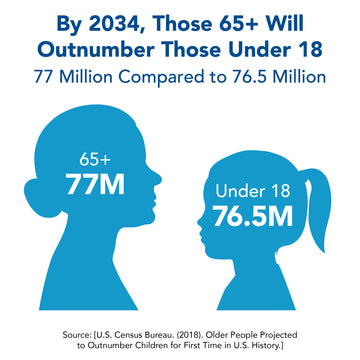
The Size of the Older Demographic Continues to Grow
By 2034, it’s estimated there will be more older adults 65+ than those under 18: 77 million compared to 76.5 million
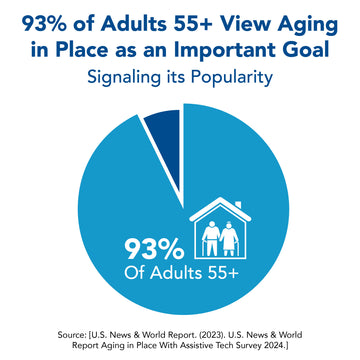
Aging in Place is a Major Priority and Need
A US News and Report survey found that 93% of adults 55+ view aging in place as an important goal.

The Amount of Older Adults in Traditional Housing is on the Rise
A 2022 study found that in the last 20 years, the proportion of older adults in:
- Traditional housing increased
- Community-based residential facilities remained the same
- Nursing facilities decreased
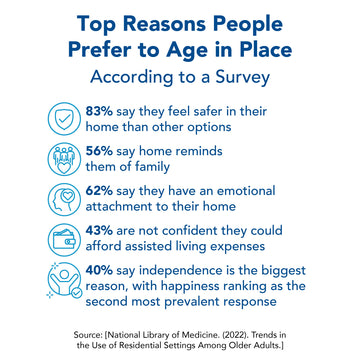
Home Safety, Emotional Attachment, and Independence are Key Reasons for Aging in Place
Top reasons people prefer to age in place:
- 83% say they feel safer in their home than other options
- 56% say home reminds them of family members
- 62% say they have an emotional attachment to their home
- 40% say living independently is the biggest reason, with happiness ranking as the second most prevalent response
- 43% are not confident they could afford assisted living expenses
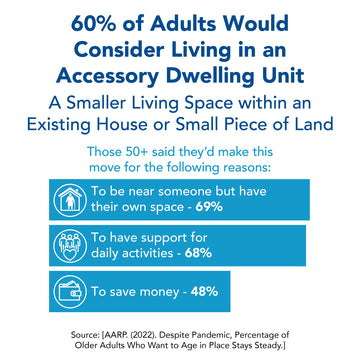
Moving into an Accessory Dwelling Unit has Now Become Something Adults Would Consider
A poll from AARP discovered that 60% of adults would consider living in an accessory dwelling unit. This is a smaller living space located on a property with an existing house or small piece of land.
Those 50+ said they’d make this move for the following reasons:
- To be near someone but have their own space - 69%
- To have support for daily activities - 68%
- To save money - 48%
Challenges and Barriers to Aging in Place
There are many challenges when it comes to aging in place successfully. It goes beyond the physical and mental decline associated with aging. Below, we highlight study-backed challenges and barriers many aging in place face.

Aging Ready Housing
A 2020 report estimated that only 10% of Homes in the United States are “aging ready.” A house considered aging-ready has a step-free entryway, a first-floor bedroom & bathroom, and at least one bathroom accessibility feature.
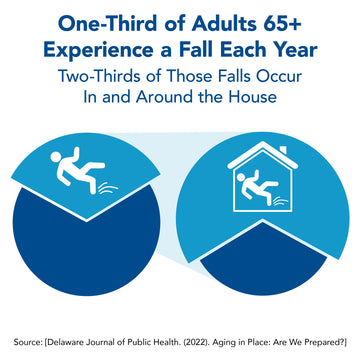
Increased Risk of Falls
As we grow older, we become more prone to falls. Studies have found one-third of adults 65+ experience a fall each year. Two-thirds of those falls occur in and around the house.

Daily Home Tasks
Old age brings a deteriorated ability to move and complete typical household chores and tasks. Surveys found the top challenging tasks for older Americans to include:
- Cleaning - 37%
- Outdoor tasks (lawn mowing, gutter cleaning, etc.) - 32%
- Home upkeep - 16%
- Repairs - 8%
- Indoor remodeling - 3%
- Movement - 2%
- Other - 1%
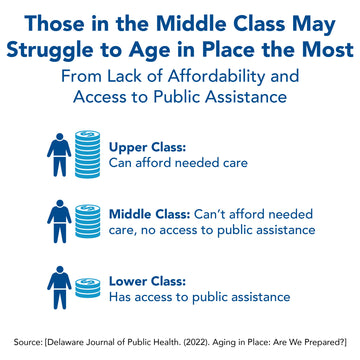
Being in the Middle Class
From a socioeconomic viewpoint, being in the middle class can be a challenge for aging in place. Wealthy, upper-class Americans can afford the needed care to age in place. And the lower class is eligible for some degree of subsidized care from the government. However, the middle class often struggles due to affordability and lack of eligibility for public assistance.

Loneliness
Because aging in place involves remaining in the privacy of one’s home, loneliness is a crucial challenge. Studies have found one-third of adults 45+ experience feelings of loneliness.
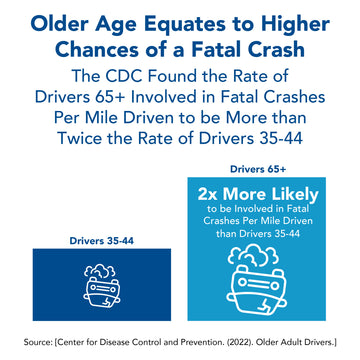
Transportation
Growing older causes our physical and mental abilities to deteriorate. Poor vision, mental cognizance, and physical reactiveness (or a combination of all) cause our driving skills to deplete. The CDC found the rate of drivers 65+ involved in fatal crashes per mile driven to be more than twice the rate of drivers 35 to 44.

Chronic Health Conditions
It’s well known that with aging comes health issues. The National Council on Aging reports that 94.9% of adults 60+ have at least one chronic health condition, and 78.7% have two or more.
The top 10 chronic conditions for those 65+ include:
- High Blood Pressure
- High Cholesterol
- Arthritis Ischemic/Coronary
- Heart Disease
- Diabetes
- Chronic Kidney Disease
- Heart Failure
- Depression
- Alzheimer's and Dementia
- Chronic Obstructive Pulmonary Disease (COPD)
Chronic health conditions can bring many specialized health care needs and services to make aging in place possible.

Knowledge of Senior-Friendly Places
Socializing with people our age is vital for our sense of belonging and inclusiveness. Healthy Aging Poll found two in five older adults (40%) did not know places or organizations in their community that welcome people their age to socialize, exercise, or participate in activities.
This finding raises the concern of social isolation for older adults aging in place.
Costs
The cost of aging at home is one of the key selling points to many. However, it can be challenging to pinpoint just how much it will cost. Below, we highlight key findings for the various costs of aging in place. These include remodeling costs, alternatives to aging in place, and standard services to maintain home independence.
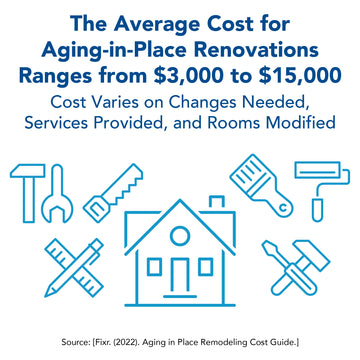
$3,000 to $15,000 is the Average Cost to Remodel a Home for Aging in Place
The national average cost for remodeling tends to be in the $9,500 area and can range from $3,000 to $15,000. However, this varies based on the changes needed, services provided, and the rooms being modified.

The Average Home Remodel Cost by Area
The average home remodel cost by area includes:
- Bathroom: $20 to $25,000
- Other (major home modifications such as widened halls, security, etc.): $50 to $40,0000
- Bedroom: $80 to $12,000
- Outdoors: $300 to $5,000
- Stairs: $800 to $45,000
- Kitchen: $8,000 to $50,000
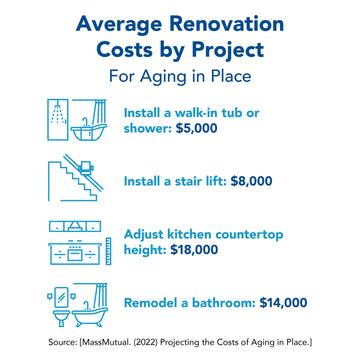
Average Renovation Costs by Project
There are many types of renovations one can make to age in place. These include:
- Install a walk-in tub or shower: $5,000
- Install a stair lift: $8,000
- Adjust kitchen countertop height: $18,000
- Remodel a bathroom: $14,000

The Alternatives of Aging in Place Range from $3,000 to $13,000 per Month
The two alternatives for aging in place include assistive living facilities and nursing homes. A report from Genworth found the cost of these to average out to:
- Assistive living facilities: $3,000 to $9,000 per month
- Nursing homes: $5,000 to $13,000 per month
While these monthly costs vary significantly on the location and services provided, they’re notably more significant than the average costs to age at home.
A Breakdown of In-Home Care Costs
Those aging in place typically require standard services to remain in their home. These services vary based on the person's specific needs, location, short vs. long term care, and level of care needed. Below, we highlight findings about standard services used by those aging in place.

The National Median Hourly Rate for Home Care Aids: $27
Home care aids typically provide services such as personal care, household tasks, and companionship. Their costs will vary based on transportation and services provided.

Independent Caregivers Are Typically 20-30% More Affordable than Home Care Agencies
Mass Mutual reports that independent caregivers typically charge 20-30% less than home care agencies. However, this forces the person hiring the caregiver to assume the role of hiring and handling payments to the caregiver.

Adult Day Care Ranges from $75 to $200 Per Day
Adult daycare is a service offered to seniors who need a temporary place to go during the day. They can be great for those needing help while their family caregivers are away at work. The average cost ranges from $75 to $200 per day. These costs can vary based on transportation fees and special services offered.

Comparing the Median Costs of Care Services
These statistics may be helpful for those comparing whether to age in place or pay for care at a facility. Genworth reports the median costs of care services:
- Home health aid services: $5,148/mo
- Assisted living facility: $4,500/mo
- A semi-private room at a nursing home facility: $7,908/mo
- Part-time adult day care services: $1,700/mo
Home Modifications
Home modifications are a vital aspect of making aging in place manageable. And it goes beyond simple changes like grab bars and raised toilet seats. Below, we look at findings regarding home changes for improved aging and accessibility.

From 2020 to 2023, 76% of Home Remodelers Saw an Increase for Aging-in Place Features
As aging in place continues to grow in popularity, home remodelers continue to see growth. Over three-quarters of home remodelers (76%) have seen increased requests for aging-in-place features from 2020 to 2023.
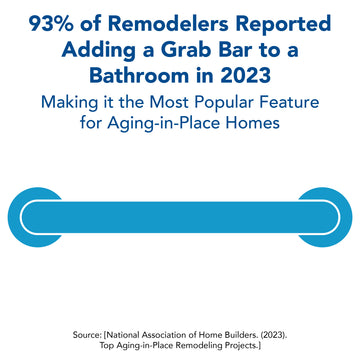
Grab Bars are the Most Requested Feature for Accessible Homes
93% of remodelers in 2023 reported adding a grab bar to a bathroom. It's the most popular feature for aging-friendly homes.

Modification Mindset: How Much Consideration Those 50 to 80 Put into Making Their Home ‘Aging Friendly’
A Healthy Aging Poll asked adults 50 to 80 how much consideration they’d put into the needed modifications to age at home. The study found:
- Alot 15%
- Some 38%
- Little 26%
- None 21%
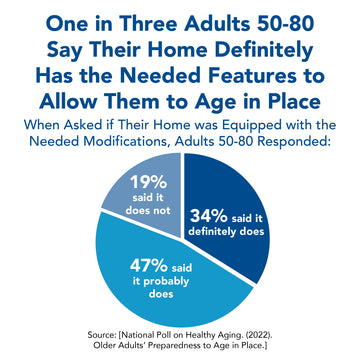
One in Three Adults 50-80 Say Their Home Definitely has the Needed Features to Allow Them to Age in Place
When asked if their home was equipped with the needed modifications, adults aged 50-80 responded:
- 34% said it definitely does
- 47% said it probably does
- 19% said it does not
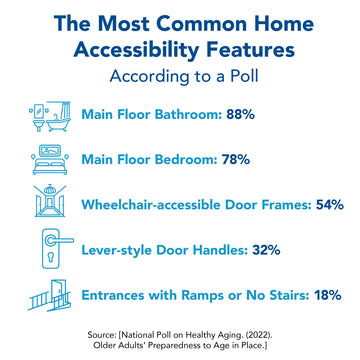
The Most Common Home Accessibility Features
Home accessibility is a core component to make aging in place possible. Based on responses from a poll, these are the most common home accessibility features:
- Main floor bathroom: 88%
- Main floor bedroom: 78%
- Wheelchair-accessible door frames: 54%
- Lever-style door handles: 32%
- Entrances with ramps or no stairs: 18%
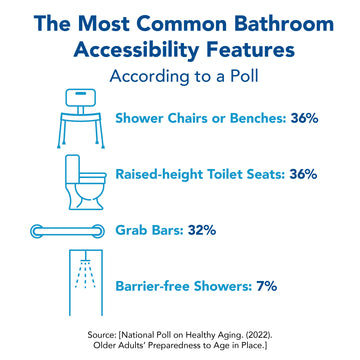
The Most Common Bathroom SAfety Features
Bathroom safety is another crucial part of home modifications. These are the most common bathroom features:
- Shower chairs or benches: 36%
- Raised-height toilet seats: 36%
- Grab bars: 32%
- Barrier-free showers: 7%
Technology
The use of technology continues to grow, even when it comes to aging in place. Statistics show that technology is crucial in making aging in place more manageable.
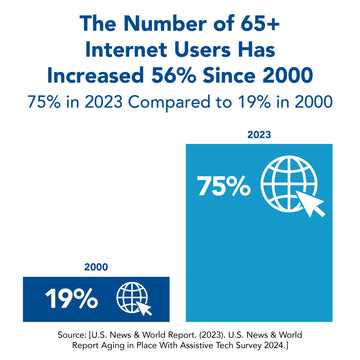
The Number of 65+ Internet Users Has Gone up 56% Since 2000
Older adults have notably adopted technology in the past two decades. 75% of adults 65+ are internet users compared to just 19% in 2000.

Most Adults 65+ are Smartphone Owners
The Pew Research center reports that 61% of those 65+ own a smartphone. That number is up 53% from 13% in 2012.
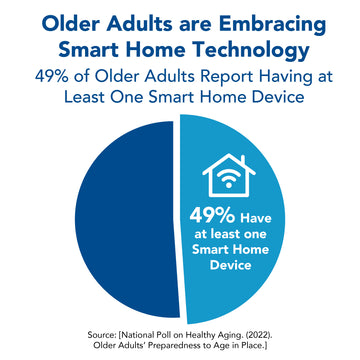
Smart Home Devices Play a Key Role in Aging in Place
A survey from Healthy Aging Poll found that 49% of older adults report having at least one smart home device.

Elder Care Technology Continues to Grow
The elder-care technology market is booming. It's projected to reach $32.5 billion by 2026. The devices playing a vital role include:
- Smart home devices
- Wearables
- And telehealth
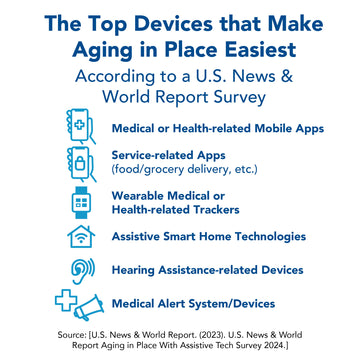
The Top Devices that Make Aging in Place Easiest
The US News and World Report found these to be the devices that make it easiest to age in place:
- Medical or health-related mobile apps
- Service-related apps (food/grocery delivery, etc.)
- Wearable medical or health-related trackers
- Assistive smart home technologies
- Hearing assistance-related devices
- Medical alert system/devices
Sources:
- https://www.census.gov/newsroom/press-releases/2018/cb18-41-population-projections.html
- https://www.usnews.com/360-reviews/services/senior-tech-aging-in-place-survey
- https://reversemortgagedaily.com/articles/nearly-90-of-older-adults-want-to-age-in-place-survey/
- https://pubmed.ncbi.nlm.nih.gov/33999126/
- https://www.aarp.org/home-family/your-home/info-2021/home-and-community-preferences-survey.html
- https://www.census.gov/content/dam/Census/library/publications/2020/demo/p23-217.pdf
- https://www.ncbi.nlm.nih.gov/pmc/articles/PMC9495472/
- https://www.cdc.gov/transportationsafety/older_adult_drivers/index.html
- https://www.ncoa.org/article/the-top-10-most-common-chronic-conditions-in-older-adults
- https://www.healthyagingpoll.org/reports-more/report/older-adults-preparedness-age-place
- https://www.fixr.com/costs/aging-in-place-remodeling
- https://pro.genworth.com/riiproweb/productinfo/pdf/282102.pdf
- https://blog.massmutual.com/retiring-investing/age-in-place-costs
- https://www.nahb.org/blog/2023/05/top-aging-in-place-remodeling-projects
- https://www.rubyhome.com/blog/aging-in-place-stats/
- https://www.linkedin.com/pulse/elderly-care-apps-market-size-2023-share-latest

 Help
Help 



